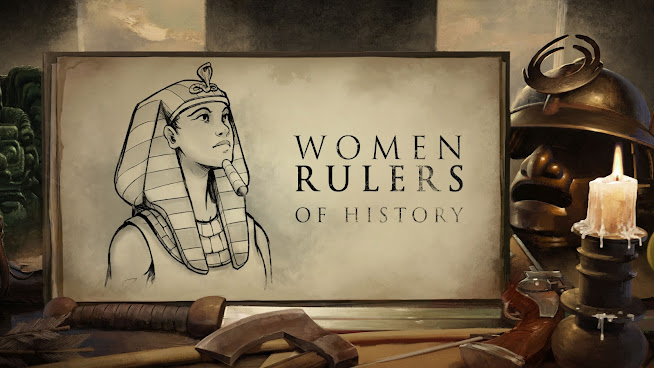Powerful Female Rulers of Ancient Egypt

1. Merneith (c. 3200-2900 BC)
Historical records show that Merneith was a queen consort and regent – the wife of Djet and mother of Den, the pharaoh. However it is believed that she may have also been a ruler in her own right.
Her tomb bears a striking resemblance to those of Egyptian pharaohs from the First Dynasty and contains artefacts usually reserved for kings – a large underground chamber, graves for servants, and sacrificial offerings.
Her name was also included in a list of early pharaohs on a seal in Den’s tomb, which has led historians to believe that she was a pharaoh. If true, then Merneith would be the first female pharaoh and queen regnant in recorded history.
2. Sobekneferu (r. 1806–1802 BC)
Sobekneferu was the first female pharaoh of ancient Egypt confirmed by evidence. She was the last ruler of the 12th Dynasty, following the death of her brother Amenemhat IV. She was the first monarch named after the crocodile god Sobek, symbol of pharaonic might.
Archaeologists have found images that refer to her as Female Horus, King of Upper and Lower Egypt, and Daughter of Re.
She is said to have created her own pyramid at Mazghuna near Dahshur, but no trace of her burial has been found. Sobekneferu’s innovations inspired the next female pharaoh, Hatshepsut, who went on to adopt the same kingly regalia and false beard.
3. Hatshepsut (r. 1578-1478 BC)
The second historically confirmed female pharaoh, Hatshepsut became queen of Egypt at the age of 12 upon marrying her half-brother Thutmose II. She then became regent to her infant stepson Thutmose III, following the death of her husband. Less than 7 years into her regency, Hatshepsut assumed the full powers and title of a pharaoh.
To consolidate her power, Hatshepsut ordered all official representations of her to include all the traditional regalia and symbols of the pharaoh – the Khat head cloth topped with the uraeus, the false beard and shendyt kilt.
During her reign, she established ambitious building projects, including the construction of a great temple at Deir el-Bahari at Luxor. She also oversaw the significant expansion of trade, launching a sea voyage to the northeast coast of Africa.
4. Nefertiti (1370-1330 BC)
Alongside her husband Akhenaten IV, Nefertiti ruled Egypt from 1353 to 1336 BC. The power couple of the ancient world are best remembered for starting a monotheistic religious revolution. Prior to their reign, Egyptian religion was polytheistic. Nefertiti and Akhenaten pushed for the worship of only one god – the sun disk called Aten.
Under their joint rule, ancient Egypt became more prosperous than it had ever been. Nefertiti ruled Egypt after the death of her husband, however she vanished from historical records within a few years of assuming the throne.
Some scholars believe she ruled Egypt briefly as pharaoh under the name Neferneferuaten, before the ascension of Tutankhamun.
5. Cleopatra VII (r. 51-12 BC)
The daughter of Ptolemy XII, Cleopatra was the last active pharaoh in Ptolemaic Egypt, ruling as co-regent first with her brothers Ptolemy XIII and then Ptolemy XIV. Cleopatra was forced to flee when Ptolemy XIII ousted her from power. Determined to regain the throne, she raised an army of mercenaries and sought the backing of Roman leader Julius Caesar.
With Rome’s military might, she defeated her brother’s forces, gained control of Egypt, and bore Julius Caesar a son. After his death, she became involved with his successor, Marc Anthony. Of Macedonian origin, Cleopatra was fluent in a multitude of languages including Aramaic, Egyptian, Ethiopic, Greek, Hebrew and Latin.
6. Nitocris
Because she doesn't appear in Egyptian texts, there is still debate on whether Nitocris actually existed. Her existence had been attributed to the imagination of ancient Greek historian Herodotus. Though her name does appear on a list of known kings in the 'Turin Papyrus.' There is a dark revenge tale (or true story?) associated to Nitocris. Following the assassination of her brother, Nitocris is said to have built a chamber and invited the murderers to a feast. She then took revenge by flooding the chamber with water from the Nile, killing them all.
7. Ahhotep I
The mother of Ahmose I, who was a pharaoh and founder of the 18th Dynasty of Egypt, Ahhotep I was a powerful and fearless woman who ruled the country in the absence of her son. Twosret stepped into power following the death of pharaoh Siptah, with whom she might have co-ruled.

Post a Comment
Please do not enter any SPAM link in comment box.